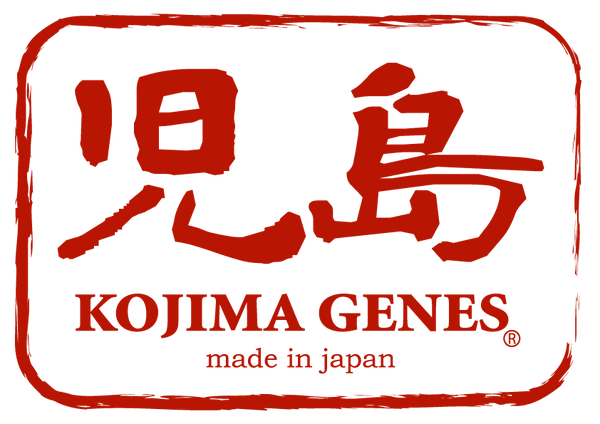| โคจิม่า |
แหล่งกำเนิดยีนส์ญี่ปุ่น ตั้งอยู่ในเมืองคุราชิกิ จังหวัดโอกายามะ ซึ่งมีประวัติศาสตร์การผลิตผ้าฝ้ายแคนวาส |
| ออนซ์ / ออนซ์ |
หน่วยวัดน้ำหนักผ้าเดนิม น้ำหนักปกติคือ 13-14 ออนซ์ |
| ยีนส์ |
คำว่า "กางเกงยีนส์" เป็นภาษาญี่ปุ่นและภาษาอังกฤษ มีที่มาจากคำว่า "กางเกง GI" ที่ทหารสหรัฐสวมใส่หลังสงคราม |
| ชุดเอี๊ยม |
กางเกงที่มีเอี๊ยมและสายเข็มขัด ซึ่งเดิมใช้เป็นชุดทำงานที่มีคุณสมบัติเช่น ห่วงค้อนและกระเป๋าใส่เครื่องชั่ง |
| ตรง |
กางเกงยีนส์ชนิดหนึ่งที่มีทรงตรงตั้งแต่ต้นขาถึงปลายขา |
| บาง |
มีรูปร่างค่อนข้างแคบโดยรวมและค่อยๆ แคบลงอย่างมากที่ชายเสื้อ |
| ทรงเรียว |
เงาที่ค่อย ๆ แคบลงเมื่อเข้าใกล้ชายเสื้อ |
| บูทคัท |
ชายเสื้อทรงบานออกเล็กน้อยเพื่อให้ใส่รองเท้าบู๊ตคาวบอยได้ ซึ่งเป็นที่นิยมในช่วงทศวรรษ 1970 |
| กว้าง |
กางเกงยีนส์ทรงหลวมและกว้างตั้งแต่ต้นขาถึงชายเสื้อ |
| หมุดย้ำ |
หมุดทองแดงใช้ในการเสริมแรงในบริเวณที่มีแนวโน้มสึกหรอ ซึ่งเป็นรายละเอียดสำคัญของกางเกงยีนส์แบบดั้งเดิม |
| หมุดเจาะ |
หมุดย้ำที่ตอกลงบนผ้าเดนิมเพื่อเสริมความแข็งแรงให้กับจุดที่ต้องรับแรงสูง ซึ่งมักเป็นจุดเด่นของกางเกงยีนส์วินเทจ |
| หมุดย้ำซ่อน |
หมุดย้ำที่วางไว้ภายในกระเป๋าหลังเพื่อเสริมความแข็งแรงเพื่อไม่ให้มองเห็นจากภายนอก เป็นรายละเอียดวินเทจคลาสสิก |
| หมุดย้ำเป้า |
หมุดย้ำที่วางไว้บริเวณเป้าเพื่อเพิ่มความแข็งแรง มักพบในกางเกงยีนส์วินเทจ |
| บาร์แท็คส์ |
การเย็บแบบเย็บเสริมความแข็งแรงให้กับบริเวณต่างๆ เช่น กระเป๋า หรือ ห่วงเข็มขัด |
| สายรัด |
เย็บด้านข้างเพื่อยึดส่วนที่เสี่ยงต่อการเครียดและป้องกันการหลุดลุ่ย |
| กระเป๋าใส่เหรียญ |
กระเป๋าเล็กๆ ที่ออกแบบมาเพื่อใส่นาฬิกาพกโดยเฉพาะ ปัจจุบันเรียกกันทั่วไปว่ากระเป๋าใส่เหรียญ |
| ซิปรูด |
กางเกงยีนส์ที่มีซิปปิด โดยมีตัวเลื่อนและฟันเป็นตัวทำหน้าที่ยึด |
| ปุ่มบิน |
กางเกงยีนส์แบบติดกระดุม โดยที่ชายเสื้อหมายถึงเนื้อผ้าที่หุ้มกระดุมหรือซิป |
| รัดหลัง |
เข็มขัดปรับที่ด้านหลังของกางเกงยีนส์เพื่อให้พอดีกับเอว เป็นรายละเอียดชุดทำงานแบบคลาสสิก |
| ออฟเซ็ตเซ็นเตอร์ลูป |
ห่วงเข็มขัดด้านหลังวางอยู่ในตำแหน่งที่เยื้องจากกึ่งกลางเล็กน้อยเพื่อหลีกเลี่ยงการทับซ้อนของตะเข็บหนา เป็นรายละเอียดแบบวินเทจ |
| ซับในกระเป๋า |
ผ้าซับในกระเป๋า มีลักษณะแข็งแรงและติดกาวเพื่อความทนทาน |
| การเย็บ |
การเย็บที่ช่วยเพิ่มดีไซน์และฟังก์ชัน มักจะมองเห็นได้ที่กระเป๋าหลังเป็นตราสินค้า |
| ดี-ริง |
ฮาร์ดแวร์โลหะรูปตัว D ที่ติดอยู่กับห่วงเข็มขัดด้านหน้าเพื่อใช้ในเชิงฟังก์ชันหรือเพื่อการตกแต่ง |
| ห่วงยกสูง |
ห่วงเข็มขัดตรงกลางที่ยกขึ้น มักพบเห็นในกางเกงยีนส์วินเทจ |
| แพทช์ |
ป้ายยี่ห้อบนขอบเอว มักทำด้วยหนังหรือกระดาษ เพิ่มลายเซ็นให้กับกางเกงยีนส์ |
| บันไซลูป |
ห่วงเข็มขัดแบบขยายที่มีรูปร่างคล้ายบันไซ เย็บพร้อมกันกับขอบเอวและป้าย |
| โครงสร้างเย็บตะเข็บเดียว |
วิธีการเย็บต่อเนื่องโดยที่ด้ายเดินต่อเนื่องไม่ขาดตอน ใช้ในการติดแพทช์ |
| แฟลชเชอร์ |
ป้ายกระดาษติดอยู่ที่กระเป๋าหลังพร้อมรายละเอียดเกี่ยวกับแบรนด์และคุณสมบัติของผลิตภัณฑ์ |
| วี-สติทช์ |
การเย็บแบบรูปตัววีที่ปลายด้านหนึ่งเพื่อป้องกันการหลุดลุ่ยของด้าย ช่วยให้ประสิทธิภาพและความสะดวกในการใช้งานสมดุลกัน |
| การเย็บแบบพัน |
วิธีการตัดเย็บโดยหุ้มผ้าทั้ง 2 ผืนแล้วเย็บซ้ำ 2 ครั้งเพื่อความทนทาน |
| แอก |
ส่วนหลังเป็นชิ้นผ้าที่เอวด้านหลังซึ่งออกแบบมาเพื่อให้กางเกงยีนส์เข้ารูปกับลำตัว |
| การแก่ตัวลง |
การเปลี่ยนแปลงที่เกิดขึ้นกับผ้าเดนิมตามกาลเวลา เช่น การซีด การหลุดลุ่ย และการเกิดสนิมของหมุดย้ำ ทำให้ผ้าเดนิมมีเอกลักษณ์เฉพาะตัว |
| ซีดจาง / หนวด |
การซีดจางที่เกิดจากการเสียดสี ส่งผลให้เกิดความแตกต่างระหว่างบริเวณที่สว่างและมืดของผ้าเดนิม |
| การซีดจางแนวตั้ง |
ลวดลายซีดแนวตั้งบนผ้าเดนิมที่เกิดจากการสึกหรอ เน้นให้เนื้อผ้าดูโดดเด่น |
| การซีดจางเฉพาะจุด |
อาการซีดจางแบบเป็นจุดๆ ปรากฏเป็นพื้นผิวหยาบบนผ้าเดนิมหลังจากใช้งานเป็นเวลานาน |
| รังผึ้ง |
การซีดจางแบบรังผึ้งด้านหลังหัวเข่า เกิดจากการงอตัวซ้ำๆ |
| การย่นจมูก |
การย่นและซีดจางที่ไม่สม่ำเสมอซึ่งเกิดจากการหดตัวของด้ายและผ้า |
| เคราจางลง |
รอยจางคล้ายหนวดเคราที่บริเวณต้นขาและเข่า แผ่ขยายจากรอยยับจากการนั่ง |
| ตะเข็บเดี่ยว |
เย็บด้วยด้ายเดี่ยวบนผ้าเดนิม มีโครงสร้างแข็งแรงและทนทานต่อการหลุดลุ่ย |
| การเย็บแบบลูกโซ่ |
การเย็บแบบโซ่เชื่อมต่อที่ด้านหลังของตะเข็บ ซึ่งขึ้นชื่อในเรื่องความทนทานและเอฟเฟกต์การซีดจางอันสวยงาม |
| สหภาพพิเศษ |
เครื่องจักรเย็บผ้า Union Special ที่มีชื่อเสียงในการเย็บชายกางเกงยีนส์วินเทจแบบโซ่ |
| ซ่อมแซม |
เทคนิคการซ่อมแซมเพื่อเสริมความแข็งแรงให้กับส่วนที่สึกหรอ ซึ่งปัจจุบันนิยมนำมาใช้เป็นองค์ประกอบการออกแบบของกางเกงยีนส์ |
| ริมผ้า |
ขอบผ้าเดนิมที่ผ่านการตกแต่งเอง โดยมักใช้ด้ายสี เช่น ริมแดง |
| ผ้าใบ |
ผ้าใบทนทาน มักใช้ทำชุดทำงานและกระเป๋า |
| ทวิล (ทวิลมือขวา) |
ลายทแยงด้านขวา ซึ่งมีเส้นทแยงมุมพาดขึ้นไปทางด้านขวา ทำให้เกิดพื้นผิวขรุขระ |
| ผ้าทวิล (Twill) |
ลายทแยงมุมด้านซ้าย โดยเส้นทแยงมุมจะวิ่งขึ้นไปทางด้านซ้าย สร้างพื้นผิวที่นุ่มนวลขึ้น |
| การกำหนดขนาด |
ขนาดที่ใช้กับด้ายหรือผ้าเพื่อเพิ่มความแข็งแรงและเสถียรภาพระหว่างการทอหรือการเย็บ |
| บิด (บิดขวา/บิดซ้าย) |
ทิศทางการบิดเส้นด้าย คือ บิดตัว S (บิดขวา) หรือบิดตัว Z (บิดซ้าย) ซึ่งจะส่งผลต่อเนื้อสัมผัสของผ้า |
| เส้นด้ายปลายเปิด |
เส้นด้ายปั่นด้วยลมที่สร้างขึ้นโดยการหมุนด้วยความเร็วสูง ให้ผลผลิตสูงแต่มีความแข็งแรงภายในน้อยลง |
| เส้นด้ายแกนปั่น |
เส้นด้ายแกนปั่นที่มีส่วนกลางเป็นโพลีเอสเตอร์หุ้มด้วยฝ้าย ผสมผสานความแข็งแกร่งและเนื้อสัมผัสตามธรรมชาติ |
| เส้นด้ายปั่นแหวน |
แกนสีขาวของเส้นด้ายที่ย้อม ซึ่งสร้างขึ้นโดยการย้อมเชือก เป็นสิ่งสำคัญสำหรับการซีดสีสไตล์วินเทจ |
| จำนวนเส้นด้าย |
หน่วยวัดความหนาของเส้นด้าย โดยตัวเลขยิ่งสูงแสดงว่าเส้นด้ายมีความละเอียดมากขึ้น |
| เส้นด้ายสลับ |
เส้นด้ายไม่เรียบ มีความหนาไม่สม่ำเสมอ ช่วยเพิ่มการซีดจางของผ้าเดนิม |
| เส้นด้ายฝ้าย |
เส้นใยฝ้ายที่ผลิตจากเส้นใยฝ้ายแท้ 100% ที่มีคุณค่าต่อเดนิมวินเทจเพราะสัมผัสที่แท้จริง |
| การย้อมเชือก |
วิธีการย้อมโดยการนำเส้นฝ้ายจุ่มลงในครามซ้ำๆ โดยปล่อยให้แกนเป็นสีขาว ซึ่งจะทำให้สีซีดจางลงอย่างมีเอกลักษณ์ |
| หินล้าง |
เทคนิคการซักที่ใช้หินภูเขาไฟเพื่อสร้างรูปลักษณ์เก่าๆ ให้ดูวินเทจบนผ้าเดนิม |
| ไบโอวอช |
การซักด้วยไบโอเอนไซม์เพื่อทำให้เดนิมดูเก่าอย่างละเอียดอ่อนเพื่อให้ได้เอฟเฟกต์จากการซักที่ประณีต |
| แข็ง (ไม่ซัก) |
ผ้าเดนิมดิบที่ยังมีแป้งอยู่ เรียกอีกอย่างว่าเดนิมแบบดิบหรือแบบแข็ง |
| การซักครั้งเดียว |
เดนิมที่ผ่านกระบวนการซักเพียงครั้งเดียว เพื่อขจัดความแข็งและทำให้เนื้อผ้าคงตัว |
| แซนฟอไรซ์ |
กระบวนการหดตัวล่วงหน้าที่ช่วยป้องกันการหดตัวอย่างมีนัยสำคัญหลังการซัก |
| น้ำยาล้างเคมี |
วิธีการที่ใช้สารออกซิไดซ์เพื่อสร้างลักษณะซีดจางและเก่าบนผ้าเดนิม |
| สีย้อมเสื้อผ้า |
การย้อมเสื้อผ้าหลังจากที่สร้างเสร็จแล้ว แตกต่างจากการย้อมผ้าหรือด้ายไว้ล่วงหน้า |
| การย้อมคราม |
การย้อมครามโดยใช้ครามธรรมชาติหมัก ซึ่งสกัดจากต้นทาเดตามแบบดั้งเดิม |
| คราม |
สีสังเคราะห์หรือสีธรรมชาติที่ใช้ย้อมด้ายเดนิม โดยออกซิไดซ์จนได้สีฟ้าอันเป็นเอกลักษณ์ |
| การย้อมทับ |
การย้อมทับผลิตภัณฑ์สำเร็จรูปเพื่อเพิ่มสีหลายชั้นหรือดูสดชื่นขึ้น |
| แฮงค์ ไดอิ้ง |
การย้อมเส้นด้ายด้วยกลุ่มเส้นด้าย เป็นวิธีเก่าแก่ในการแช่มัดเส้นด้ายเพื่อให้ได้สีที่เข้มและสม่ำเสมอ |
